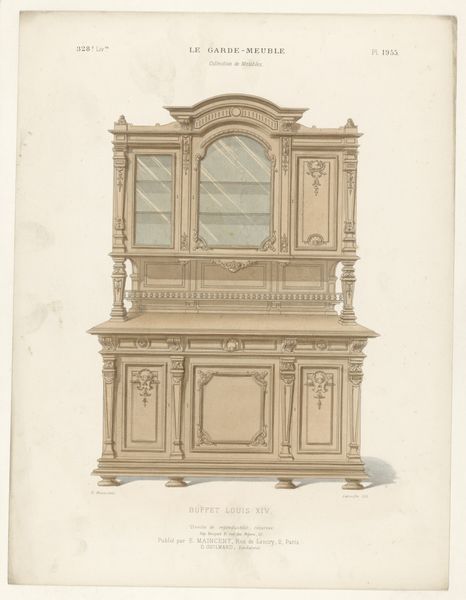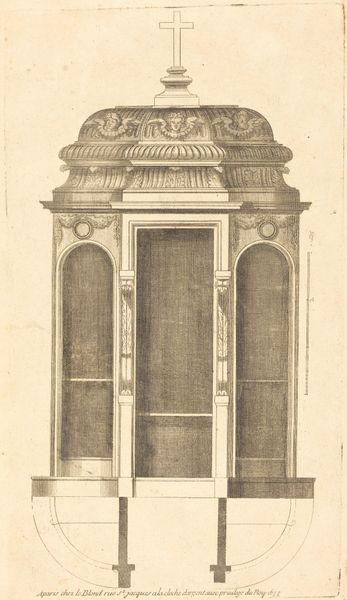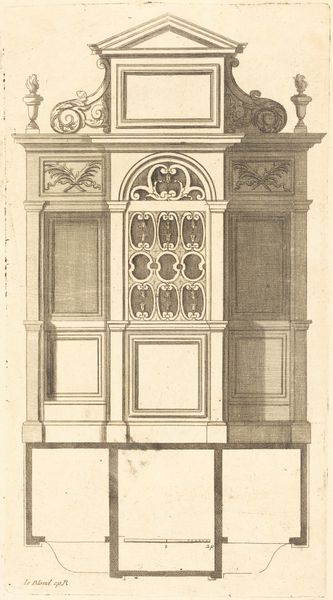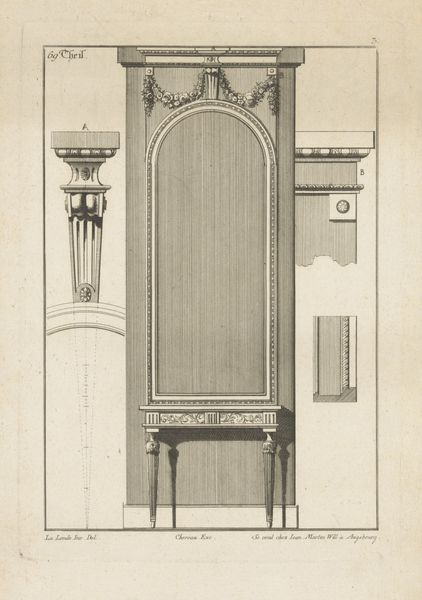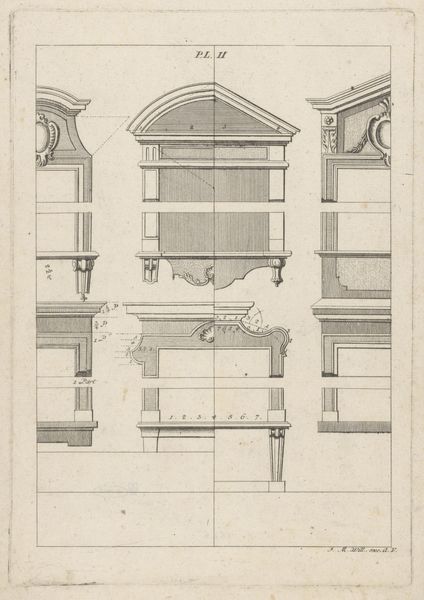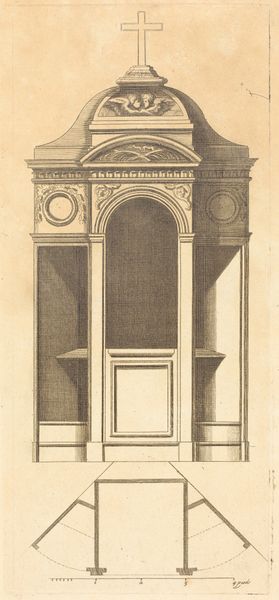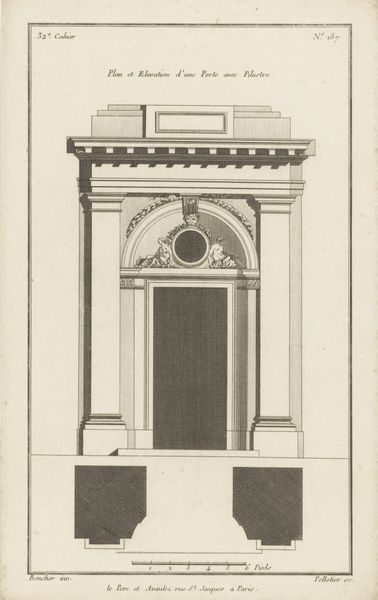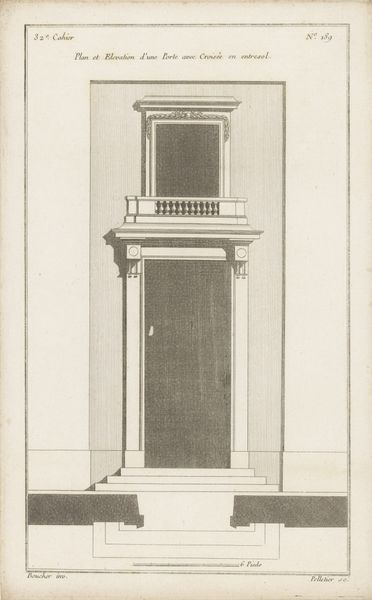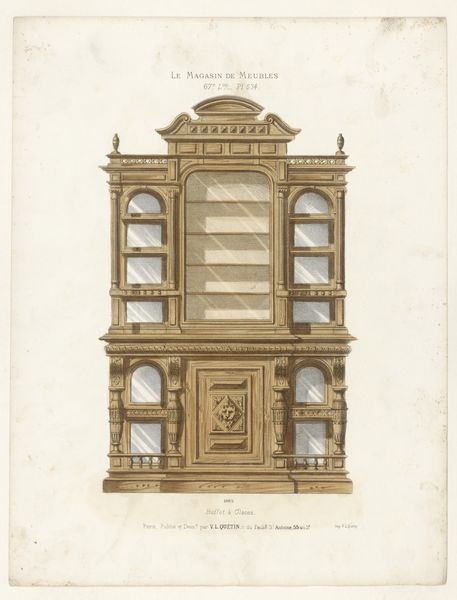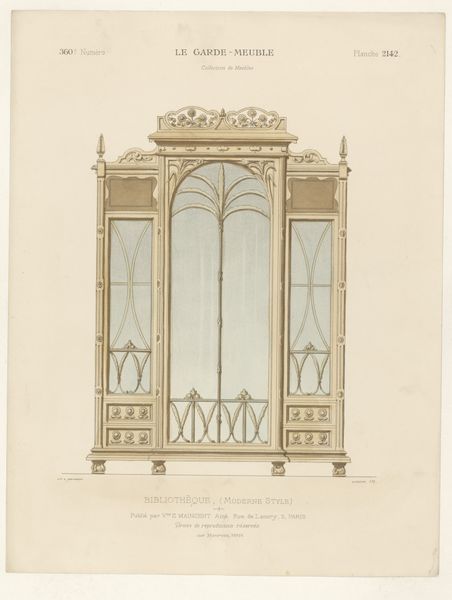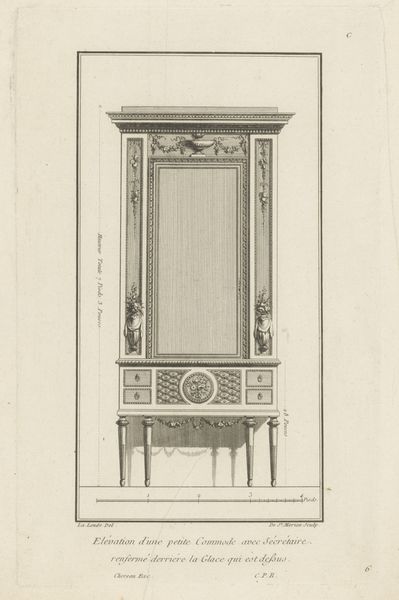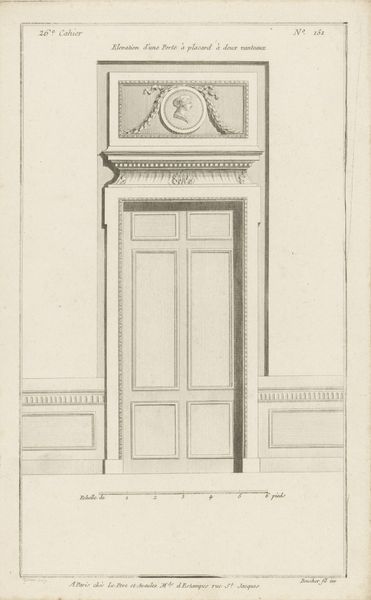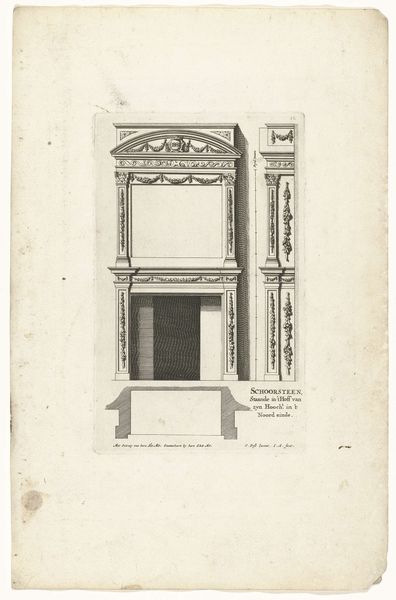
drawing, print, engraving, architecture
#
drawing
#
neoclacissism
# print
#
engraving
#
architecture
Dimensions: height 300 mm, width 190 mm
Copyright: Rijks Museum: Open Domain
Editor: So, this engraving is called "Boekenkast," dating from 1784-1785. It’s attributed to de Saint-Morien. It’s very architectural, almost like a building facade but…a bookcase. How do you interpret this work? Curator: It’s interesting how this design for a bookcase embodies Neoclassicism, drawing heavily from classical architecture to project authority and order. Consider how the Enlightenment was in full swing. Who had access to knowledge and learning at that time, and how might a design like this reinforce those power dynamics? Editor: It feels almost like a temple to knowledge, doesn’t it? Were these kinds of elaborate designs common? Curator: They were aspirational. The visual language speaks of status. The use of Corinthian pilasters, the precise symmetry, the suggestion of immense weight and permanence – these all served to communicate wealth and refined taste. But beyond the aesthetic, think about what kind of knowledge was being valorized and whose voices were being amplified. Was this inclusivity or a perpetuation of existing inequalities? Editor: So, even the design of something as simple as a bookcase could be a political statement? Curator: Absolutely. It's a microcosm of the era, reflecting its values and biases. Every choice—from the scale to the ornamentation—speaks volumes about the social and cultural landscape. Editor: I never would have thought of it that way, seeing design as an argument. Curator: It invites us to interrogate not just the beauty, but the embedded power structures. Art becomes a catalyst for deeper societal reflections. Editor: I'll definitely look at art, and even furniture, in a different light from now on! Curator: That's precisely the point; questioning and contextualizing is how we create meaningful dialogue.
Comments
No comments
Be the first to comment and join the conversation on the ultimate creative platform.
